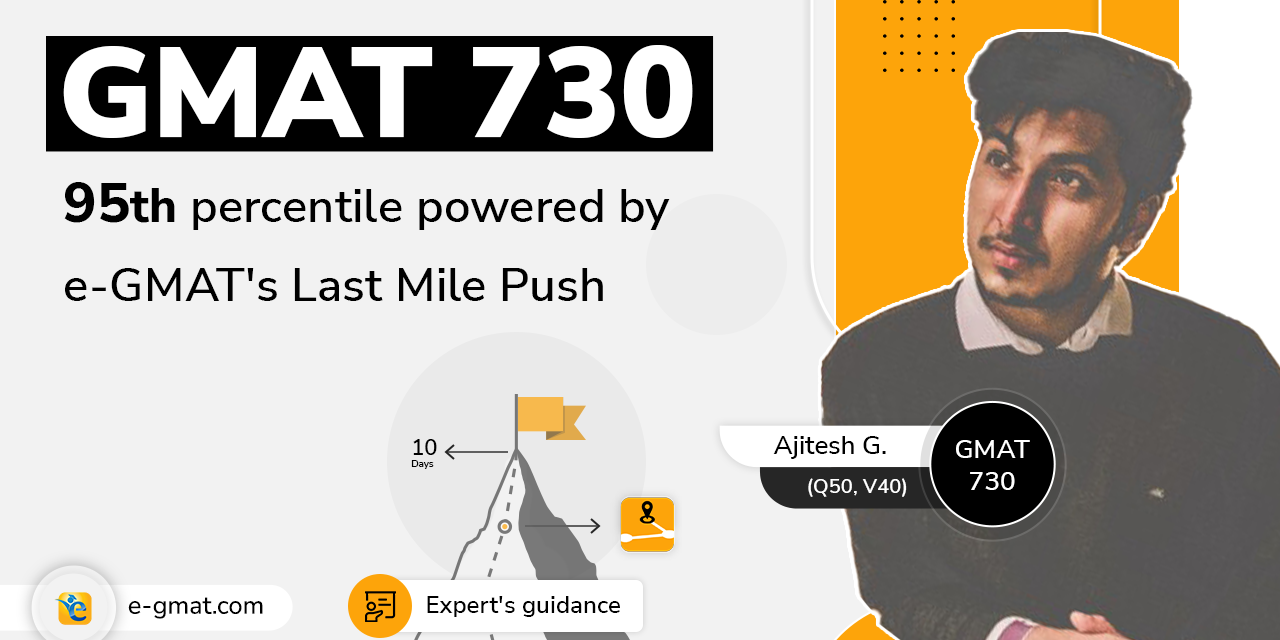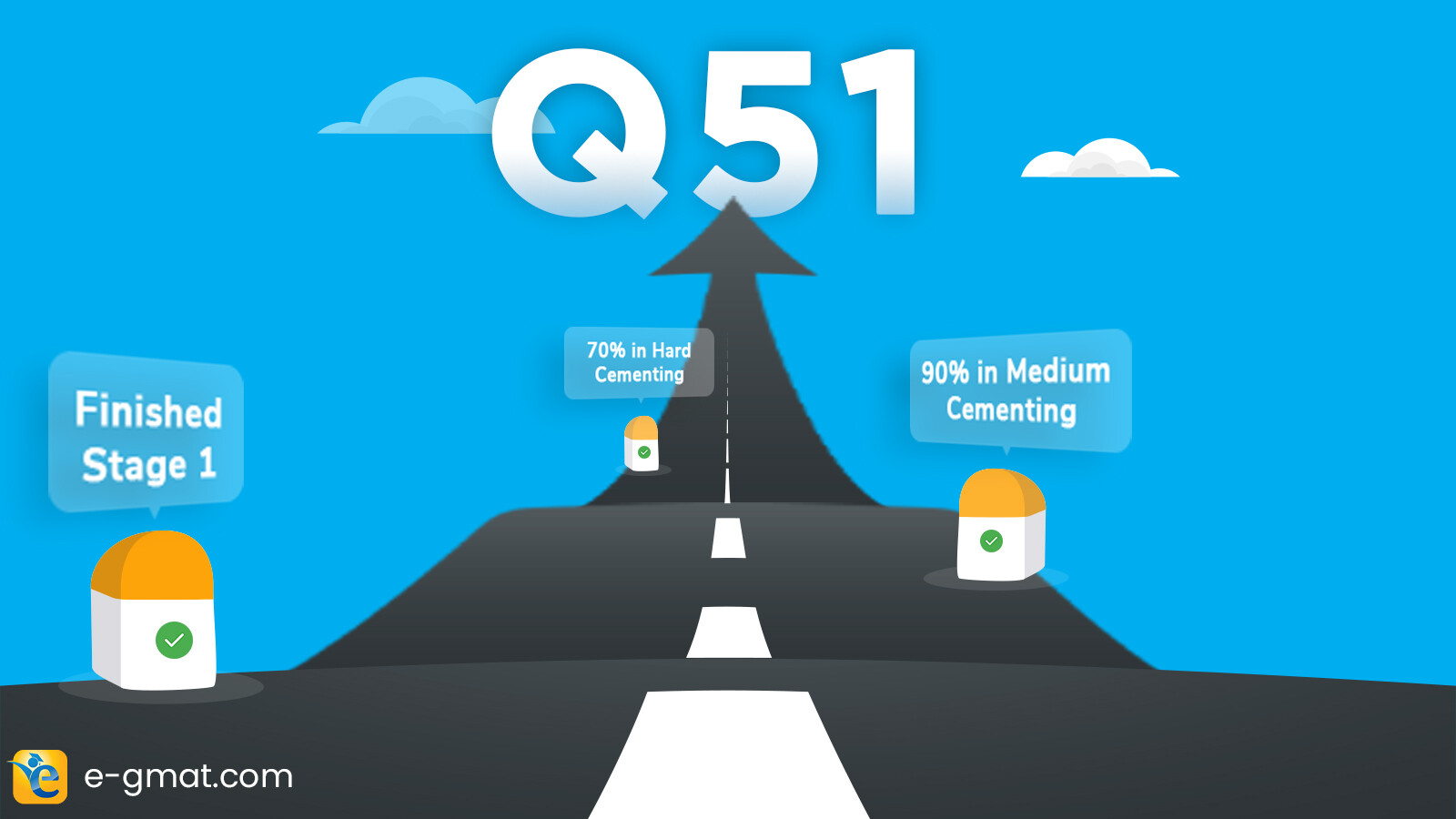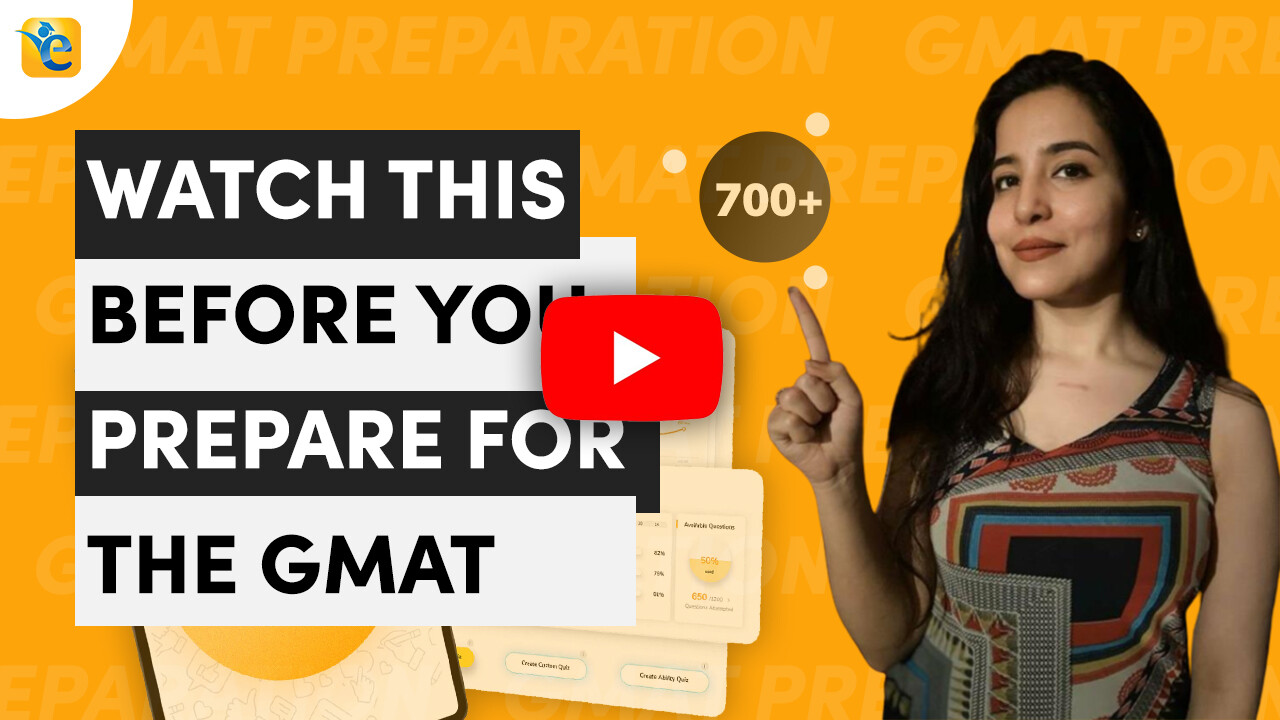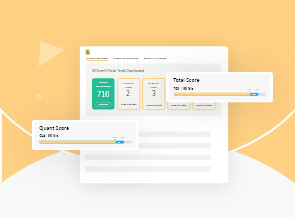A GMAT 730 scorer, Ajitesh is a chartered accountant working with an asset management company and has always wanted a global purview for his profession. After working in the industry for some time, he realized that the first step towards success in the international markets is to have an influential network across continents.
Ajitesh: Even if I plan to start a fund a few years later, I want it to be global. I figured out early in life that you need an MBA to get closer to that goal. For people to take you seriously worldwide, you must be a part of that network.
Like most GMAT aspirants, he started his GMAT preparations by self-studying using Official Mocks and various online resources. However, due to a lack of a structured course, he had an incorrect understanding of various GMAT topics and lacked the various strategies one needs to tackle hard-level questions., His preparation still had gaps that he did not know how to fill. After two months of diligent effort, he scored a GMAT 710 on his first attempt.
Still short of 20 points on his target score, he immediately decided to go for the next attempt in another ten days. However, he had little idea about the next improvement plan or the changes he needed to make to improve his performance during the exam.
Ajitesh’s GMAT journey is one of a kind, and it took a few unexpected turns before he could finally taste the sweet success. Watch the video to learn how he utilized 10 days of GMAT prep time to bring out his best potential and achieved his target score.
Ajitesh: One of my friends recommended e-GMAT, and I took the course. It helped me improve my score to 730 in just ten days. That was the best part of it.
10-day Last Mile Push Program
Ajitesh: After you reach a certain level, it is more about sharpening your skills. As I was onboarded with e-GMAT, you helped me make the improvement I needed. The modules were just perfect, and I got exactly what I needed.
In the verbal section, the meaning-based approach is terrific. I learned about this approach for the first time, no one teaches something like that, and it works wonderfully well.
In the verbal section, the meaning-based approach is terrific. I learned about this approach for the first time, no one teaches something like that, and it works wonderfully well.
He joined e-GMAT Last Mile Push program, in which he received a hyper-specific plan to prepare him in 10 days to maximize his potential. His mentor, Rashmi, helped him identify his weak areas quickly and ensured that he focused just on them. She kept him motivated and directed him towards fine-tuning his performance with quizzes and mocks she had planned for him to take.
Want to score a 99%ile score in the GMAT (760+)? A winning GMAT strategy ensures you hit your target GMAT Score. Attend our GMAT strategy session webinar and get started with developing your GMAT Strategy for a high GMAT score.
Ajitesh: I was very short on time and barely had ten days. If I factor in the essays I had to write, practically there were only five days to prepare. Getting those 20-points is entirely because of the LMP. I am so grateful to you guys for that. Crossing that 720 threshold was golden for me. The best thing about LMP was that you could identify where I was lacking and select topics for me to focus on.
Verbal preparation with methods
Despite having limited preparation time, he went through the entire e-GMAT verbal course of SC, CR, and RC, including the foundation course, Master Comprehension. To improve his verbal ability, he completely immersed himself in the course and practiced various available techniques in each sub-section.
Ajitesh earlier believed Reading Comprehension questions to be easier because it just required reading passages and answering questions. Still, while attempting GMAT-level RC questions, he found those rather challenging.
Ajitesh: I used to struggle with passages on unfamiliar topics in RC; I’d fear encountering them. But in one of the videos by the Subject Matter Expert Harsha, he teaches how to read a passage. I’d never seen anyone teaching that way. I learned how to make notes of important points so I could capture the overall essence of the passage in one read. It all really helped me improve, especially when the topics were out of my comfort zone.
I used to struggle with passages on unfamiliar topics in RC; I’d fear encountering them. But in one of the videos by the Subject Matter Expert Harsha, he teaches how to read a passage. I’d never seen anyone teaching that way. I learned how to make notes of important points so I could capture the overall essence of the passage in one read. It all really helped me improve, especially when the topics were out of my comfort zone.
Read this article to learn all about GMAT Reading Comprehension – What it tests + Sample Practice RC Questions.
Similarly, in Critical Reasoning, Harsha’s other explainer video helped me tackle one of my most feared topics– Bold Face. It explains the kind of questions, how to pre-think, eliminate answer choices, when to pause, when to focus more on the stimuli of the question, etc. Only once you implement what’s taught can you understand how effective the techniques are.
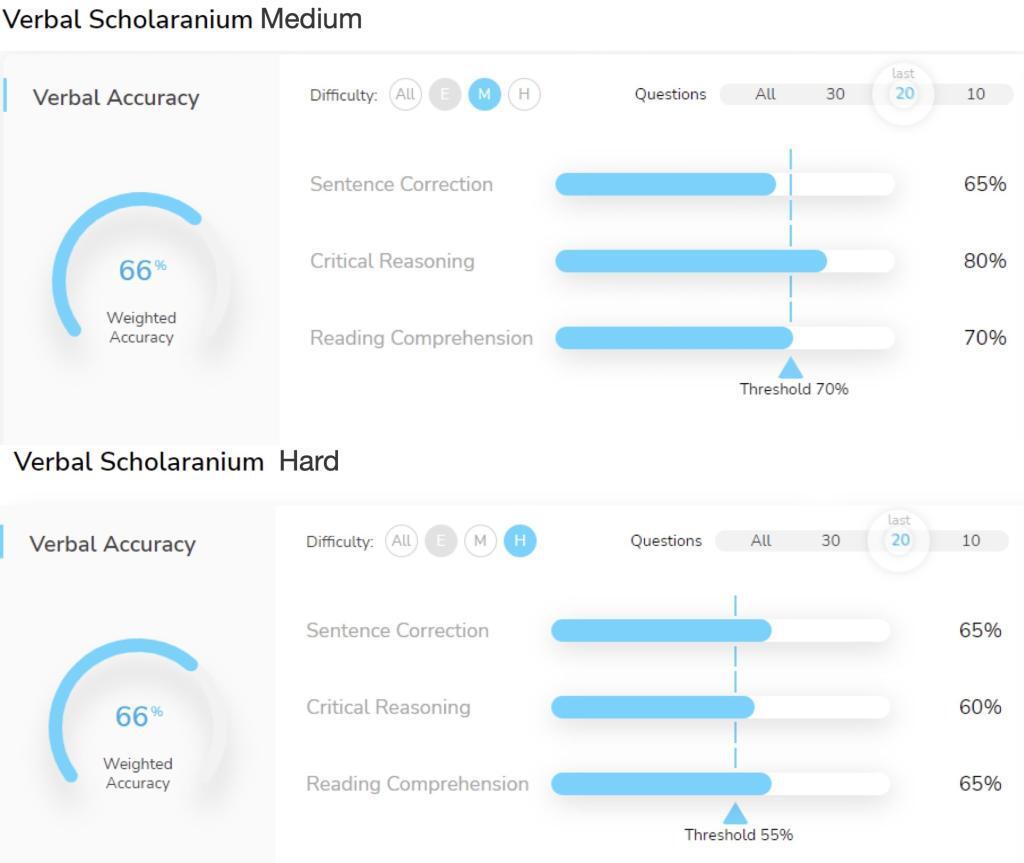
Those videos across the course broke down seemingly complex topics into simplified processes. Those methods entirely changed how I approached even hard-level questions from those topics.
Those videos across the course broke down seemingly complex topics into simplified processes. Those methods entirely changed how I approached even hard-level questions from those topics.
He found the Meaning-based approach and Pre-thinking as the golden elements of the course. He realized that by focusing only on grammar, he could solve only a limited number of SC questions. As he started using the meaning-based approach, he could also solve the hard-level questions that he needed to get his dream score.
With a reasonably high command over grammar concepts, focusing on the meaning-based method helped him confidently tackle the GMAT exam.
Test Readiness
As he completed the 3-stages of learning with the course, he moved to the final step of his preparation with test readiness. His mentor provided him with plans of customized short quizzes to help him evaluate his performance in a timed environment. Given his time limitations, he took two mocks to get familiarized with the test environment and get a sense of his performance under pressure with a ticking clock.
One of the best things about the course is, after finishing the concepts, as you start practicing, every quiz on the platform is timed. It’s a critical element because when the timer is on your head, it changes many things. And I took all the quizzes in the timed setup, which definitely helped.
One of the best things about the course is, after finishing the concepts, as you start practicing, every quiz on the platform is timed. It’s a critical element because when the timer is on your head, it changes many things. And I took all the quizzes in the timed setup, which definitely helped.
To be better ready for the test day, Ajitesh also made some practical changes such as studying on the same laptop used for the actual test, matching preparation time with the actual exam duration, and having the same desk and study room environment, etc.
In the last few days, he focused entirely on thoroughly revising and reviewing the notes he’d made for each topic. He consolidated his learnings for the exam day.

His trust in the course, the process, and the confidence he gained after completing the course helped him tackle exam anxiety effectively. He reduced the number of prep hours and allowed himself to relax. With a fresh mind and complete faith in his preparation, Ajitesh put his best foot forward during the exam.
If you want to optimize the final stage of your preparation, use a mix of sufficient, dependable sectional tests for improving testing abilities and less than a handful of full-length mocks, preferably official mocks, for assessing test readiness. Read this article to find out what causes success in GMAT?
The unexpected roadblock
Ajitesh: I got my score right after I finished the exam. I came out of my room really happy. Three days later, I got an email stating that my score was canceled.
I could not understand it as I had done everything needed by the proctor or as per the exam guidelines. I immediately got in touch with e-GMAT. Thankfully, within an hour, I received a reply from e-GMAT explaining what I needed to do next to reverse the cancellation of my score.
Every student’s success remains of utmost importance to the e-GMAT team. Witnessing Ajitesh’s GMAT prep journey allowed the team to vouch for the credibility of his GMAT score. He received complete guidance and helped make a strong case in front of GMAC.

Ajitesh: As suggested by you, I wrote an email to the authorities detailing my mock scores, which were close to 730. They took about eight days to reply positively, finally. The reasoning that e-GMAT gave me to present to them actually worked. I am so grateful that you went beyond what you were supposed to do to help me.
Ajitesh’s tips for GMAT aspirants
As a tip to his fellow GMAT aspirants, Ajitesh highlights a few points that he learned from his journey to success.
- Doing a thorough strategic analysis of all questions to ensure that the approach for solving questions is correct. Analyzing correct questions reduces the luck factor that mistakenly accounts for higher ability estimation during GMAT mocks.
- Investing time in selecting the right course and then trusting the course completely to experience the optimum improvement in performance during the final exam.
- For online set up, pre-setting, and familiarizing oneself with the final day exam experience.
- Using fingers to keep count during the exam. For example, in the verbal section, there are five options, and the five fingers can be used for options A, B, C, D, and E respectively to eliminate answer choices or to scroll through them effectively.
In a short span of 10-days, Ajitesh experienced various aspects of GMAT complexities. He optimally utilized the course to bring the best out of his potential and time.


